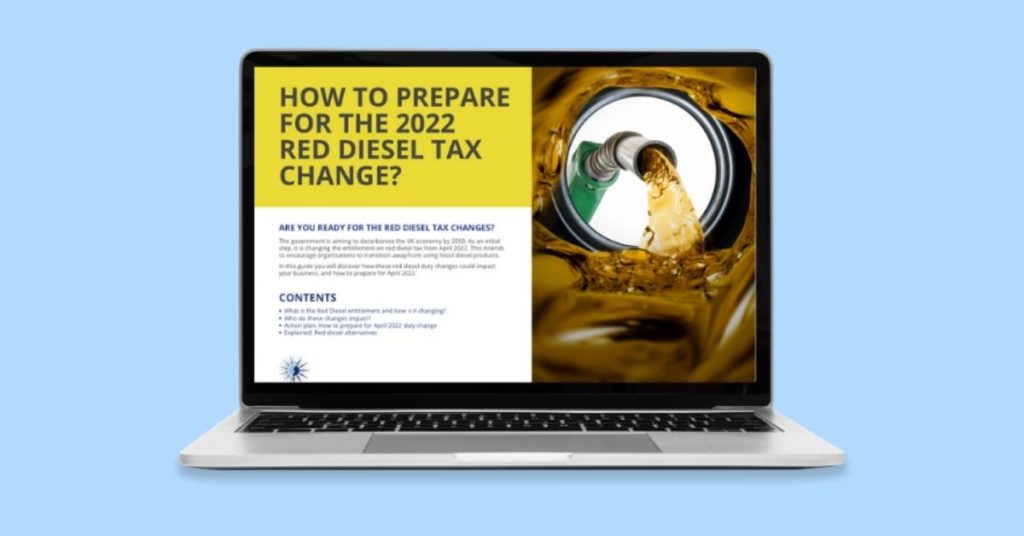Discover why the government is increasing fuel duty, how this will affect your organisation, and what you can do to prepare.
The government recently decided that most sectors of industry will lose their entitlement to use low duty red diesel from April 2022. As a step towards an ambitious 2050 net-zero carbon target, business diesel users are being incentivised to invest in cleaner alternatives through alterations to the fuel duty tax systems.
This change is set to vastly increase fuel prices for large swaths of industrial users throughout the UK.

#1 What is red diesel and who uses it?
Red diesel is a category of diesel that currently receives a substantial duty cut.
This dyed fuel (which gives it a red colour) currently benefits from a 47 pence per litre subsidy over regular road diesel.
Red Diesel goes by many names:
- Class A2 gas oil
- Gas oil EN590
- Marked gas oil
- 35 second oil
- Tractor diesel
- Cherry red
Industries that used to benefit from the permitted use of red diesel include:
- Construction
- Agriculture
- Marine Sectors
- Commercial and domestic heating users
- Stationary engines and back up generators
- Mobile machinery
- Off road construction
#2 What are the proposed duty changes?
Currently, red diesel includes an additional 11.14 pence per litre (PPL) of duty. This is dramatically less than the 57.95 PPL currently paid on road-going white diesel
The government recently announced that most organisations will pay an extra 46.81 pence per litre from April 2022.
This will account for an approximate 40% increase in fuel prices.
A small number of industries are eligible to continue using red diesel after April 2022:
- Agriculture, horticulture, forestry and fish farming
- Railways
- Non-commercial heating systems (for example, homes, boats, places of worship)
To avoid these increased fuel costs, consider transitioning away from using diesel-powered equipment, adopting new power sources or using alternative fuel oils.
#3 How will the transition be managed and enforced?
Prior to the changeover date of 1st April 2022, affected red diesel users must run down their stocks of fuel and transition to white diesel.
Vehicles and plant which are found to continue using red diesel after this date could be seized by authorities.
#4 How can I limit the impact on my business?
Whilst reducing fuel consumption or switching to electrical energy sources are an obvious step, these solutions offer commercial limitations for most businesses
Organisations burning red diesel in a heating application would benefit from transitioning to a specialist heating fuel.
Not only do these fuels perform better in heating applications (than diesel), they currently provide a 20% cost saving. From 2022, it is expected that these savings will increase even further.
If you are using red diesel for mobile plant or in diesel engines, consider using ultra-low carbon fuels. The substantial increase in red diesel costs makes these cleaner fuels more competitively priced.
#5 Preparation is Key
It is vital that all users of red diesel fully understand the implications of these dramatic duty changes on their business and operations. In a world of greater environmental awareness and increasingly stringent sustainability targets, early planning is crucial to avoid the pitfalls of changing legislation




